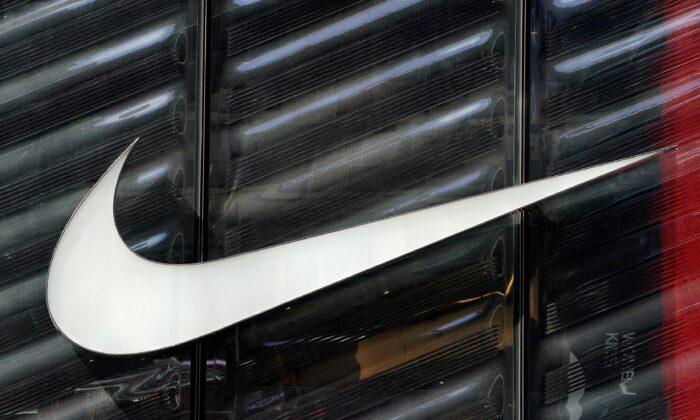U.S. stocks experienced another volatile week. Despite a strong rally early on, all major averages posted sharp weekly losses because of a late-week sell-off, led by Big Tech shares and small caps, which fell on stagflation fears—a double headwind for equities. The cooling of artificial intelligence (AI) sentiment further weighed on the market.
The S&P 500 ended March 28 at 5,580, down by 1.53 percent for the week; the Dow Jones Industrial Average fared better, down by 0.96 percent to close at 41,583; the Nasdaq performed the worst, ending the week at 17,322, down by 2.59 percent; and the small-cap Russell 2000 was down by 1.64 percent to finish at 2,023.
The bulls raced out of the gate on the morning of March 24 on Wall Street, carrying the positive sentiment of the previous Friday into the new week. Bargain hunters in the beaten-up shares of the tech sector and small caps returned to the market, encouraged by a softer tone from Washington on tariffs over the weekend. Among the big winners were Tesla, AMD, and Palantir, up by 12 percent, 7 percent, and 6.37 percent, respectively.
One key characteristic of the day’s trade was that the market direction did not reverse. Buyers kept the upper hand in closing the market, as a better-than-expected S&P Global U.S. Services purchasing managers’ index added to the positive sentiment.
All averages ended the day higher, led by the Nasdaq, near the day’s highs.
The index’s expectations component, which monitors consumers’ short-term outlook for income, business, and labor market conditions, dropped by 9.6 points to 65.2.
That’s the lowest level in 12 years, but far below the 80-point cutoff that usually signals a recession ahead.
“The nearly 10 percent decrease in consumer sentiment over the past year is a worrying sign that our economic recovery may be stalling, and it demonstrates that people are not optimistic about their financial future,” Chip Lupo, a WalletHub analyst, told The Epoch Times.
“People with low financial confidence are likely to spend less money, make fewer large purchases, and pay down less debt than people with high confidence. As a result, when consumer sentiment experiences a significant decrease, that is negative for the economy.”
Still, equity markets held up by the end of the day. The Dow Jones and S&P 500 closed almost unchanged, while the Nasdaq gained 0.46 percent, boosted by a continuing rally in Tesla.
Trade volatility continued throughout the rest of the week, peaking on March 28 when the CBOE Volatility Index closed above 20.
That’s thanks to another dose of negative news on the U.S. economy. The core PCE price index, the Federal Reserve’s preferred measure of consumer inflation, rose by 2.8 percent annually in February, up from 2.7 percent and ahead of market expectations of 2.7 percent.
“Friday’s PCE print was slightly stronger-than-expected and suggests that inflation remains sticky, despite signs of softening in recent months,” Robert Ruggirello, chief investment officer of Brave Eagle Wealth Management, told The Epoch Times.
“Friday’s data is for February and doesn’t account for the expected uptick in inflation from tariffs. While tariffs will likely add a one-off shock to inflation, it remains very unclear how long the tariffs will last, as a future trade deal may lead to reduced or even no tariffs. The tariff questions add lots of uncertainty to the inflation outlook.”
In addition, the University of Michigan’s inflation expectations for the year ahead rose for the fourth straight month to 5 percent in March.
According to the final figures, that’s the steepest increase since October 2022, slightly above the preliminary reading of 4.9 percent.
Meanwhile, the University of Michigan Consumer Expectations subindex dropped to 52.6 in March from 64 in February, below preliminary estimates of 54.2. It’s the lowest reading since July 2022, in line with the findings of the CB consumer confidence report released early in the week.
“Consumer confidence has come under a microscope in recent months as investors worry about retail sales and consumer spending—the engine of the U.S. economy,” Kent Kenwell, a U.S. investment analyst at eToro, told The Epoch Times.
“If consumer confidence continues to sag, it stands to reason that consumer spending, which accounts for roughly two-thirds of U.S. GDP, could also come under pressure. A cutback in spending has the potential to reverberate throughout the economy.”
Elevated inflation expectations and depressed consumer confidence point to stagflation, a double headwind for the economy. Economic stagnation hurts earnings, one of the drivers of equity prices over the long term. Higher inflation puts the Federal Reserve in a bind, forcing it to maintain high interest rates, which hurts valuations, another driver of equity prices.
Adding to the market volatility during the week was the cooling of the AI hype following the flopping of the CoreWeave initial public offering (IPO) on March 28. The IPO was downsized several times before debuting and was still trading below its offering price.
That was terrible news for the Magnificent Seven stocks, which have been at the core of the hype and were the biggest losers of the week. Nvidia was down by 7 percent, Alphabet by 6.13 percent, and Meta by 3.27 percent.
Ruggirello remains upbeat on equities, as valuations have become reasonable after the recent market correction.
“Most of the stocks in the Magnificent Seven are now trading at valuations that are close to the broader market’s multiple,” he said.
“For example, Nvidia’s multiple collapsed to 24 [times earnings] from 45 times earnings, whereas the S&P 500 only declined to 21 from 25 times earnings. There is not much of a valuation premium between a stock like Nvidia and the broader markets, so investors who missed out on Nvidia’s rally over the past two years have another chance.”







